Desert Building Materials
Desert Architect
Materials Table
Click the button below to open our building materials comparison table.
Natural Elements
Stone
Stone, a timeless and readily available material, has long been a staple in desert construction. Its inherent thermal mass helps regulate interior temperatures, absorbing heat during the day and releasing it slowly at night. Stone's durability and resistance to weathering make it ideal for withstanding harsh desert conditions, from intense sunlight to strong winds. From load-bearing walls and foundations to cladding, flooring, and landscaping elements, stone offers a natural beauty and connection to the surrounding environment. Locally sourced stone can further minimize transportation costs and environmental impact, making it a sustainable choice for desert homes. Whether used in its rough, natural state or carefully dressed and shaped, stone contributes a sense of permanence and harmony to desert architecture.
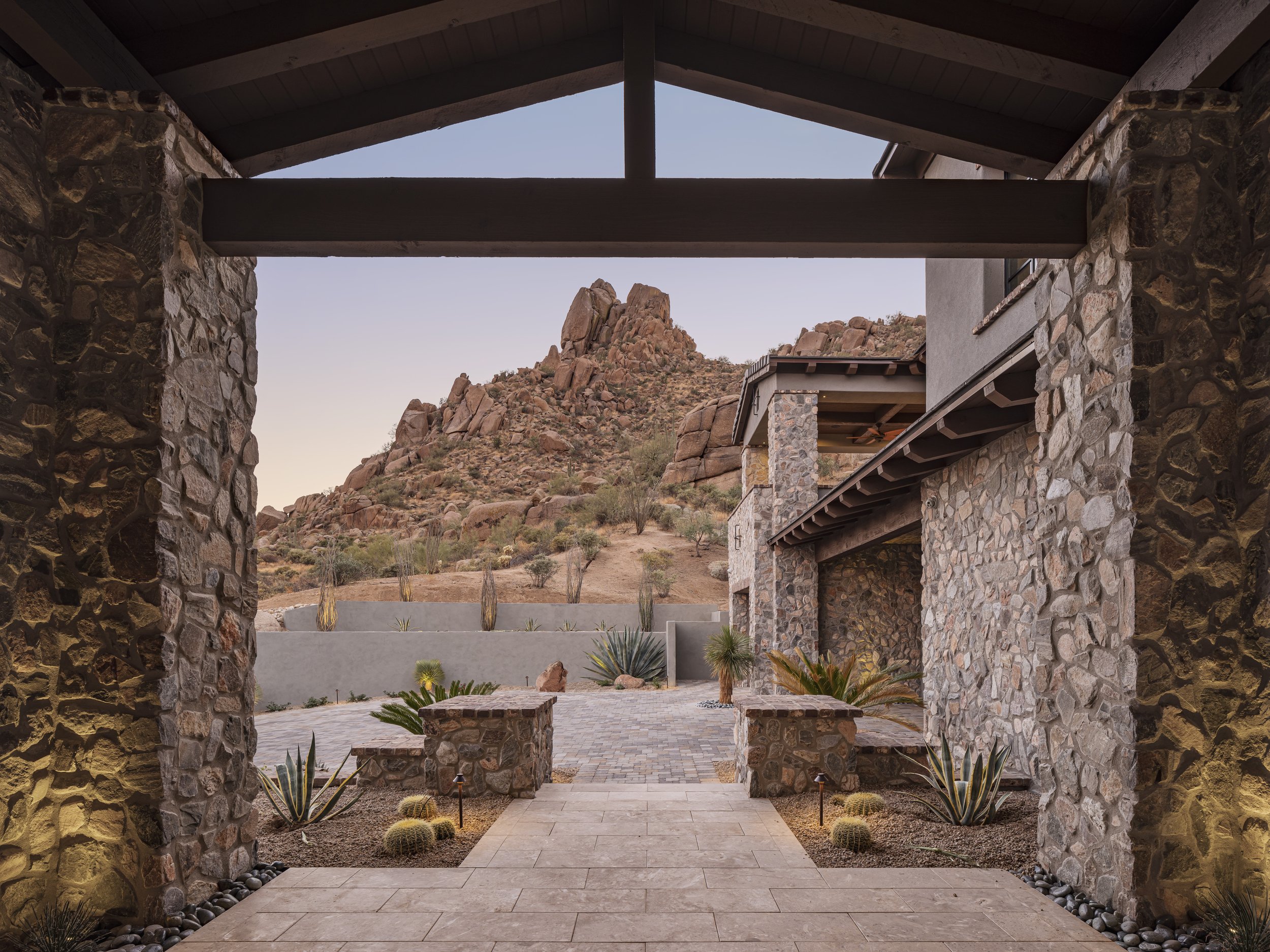
Natural Elements
Adobe
Adobe, a traditional building material in desert regions, leverages the earth's natural resources to create comfortable and sustainable homes. Made from sun-dried earth, often mixed with straw or other organic materials, adobe possesses excellent thermal mass. This property allows it to absorb heat during the day and release it slowly at night, moderating interior temperature fluctuations. Adobe's thick walls provide insulation against the desert's extreme heat and cold. Its readily available and low-cost nature makes it an economical choice, while its biodegradability minimizes environmental impact. While susceptible to erosion in wetter climates, adobe structures in dry deserts can last for centuries, showcasing the material's enduring appeal and suitability for arid environments.
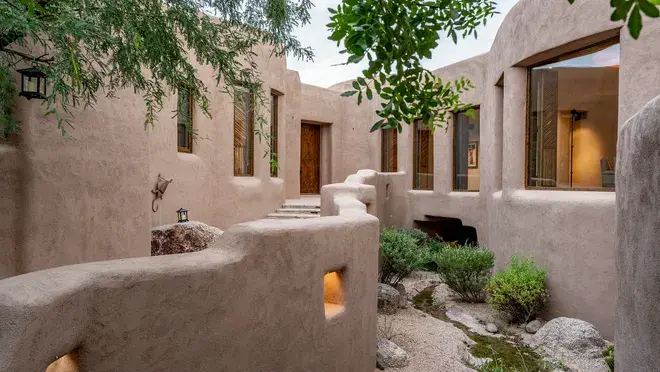
Natural Elements
Straw Bale
Straw bale construction, an increasingly popular method, offers a unique approach to building in desert environments. While seemingly unconventional, straw bales provide exceptional insulation, keeping interiors cool in summer and warm in winter. The dense bales, typically plastered with clay or lime, possess significant thermal mass, further contributing to temperature regulation. Straw is a readily available and renewable resource, often a byproduct of agriculture, making it a sustainable choice. However, protecting straw bales from moisture and fire is crucial. Moisture protection is typically achieved through thick, multi-layered plasters of clay, lime, or cement, along with careful detailing to prevent water from reaching the bales. These plasters also offer significant fire resistance, often exceeding building code requirements. Properly designed and constructed straw bale homes can offer a comfortable, energy-efficient, and environmentally friendly alternative in arid climates.
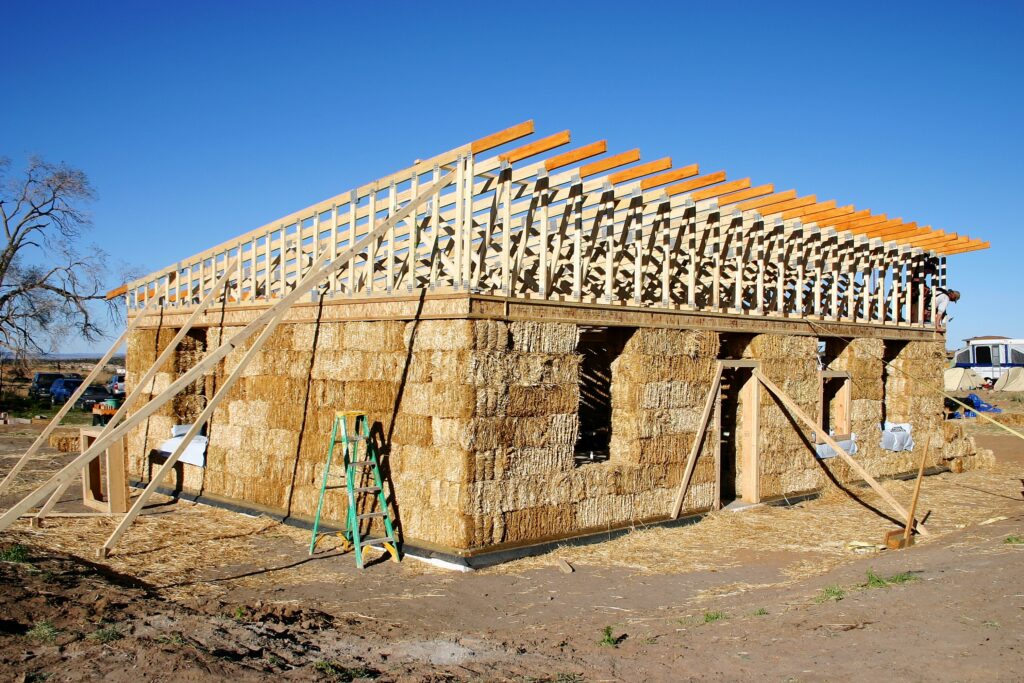
Natural Elements
Rammed Earth
Rammed earth construction, an ancient technique, creates durable and thermally efficient walls by compacting earth within forms. Utilizing readily available soil, often mixed with small amounts of clay or other stabilizers, rammed earth creates a dense, monolithic structure with good thermal mass, helping to regulate interior temperatures. The strength and stability of rammed earth walls come from the compaction process itself, which tightly binds the soil particles together, combined with the natural cohesion of the clay content. Modern rammed earth techniques may incorporate small amounts of cement or other binding agents to further increase strength and durability, especially in areas with seismic concerns or occasional torrential rains. Protection from rain, particularly heavy downpours, is essential. This is achieved through several methods, including wide roof overhangs, waterproof top layers on the walls, and the use of stabilized earth mixes. Additionally, different colored earths can be layered within the forms, creating visually striking patterns and designs in the finished walls, adding an artistic element to the structural integrity. Whether traditional or modern, rammed earth walls offer a natural beauty and connection to the earth, creating comfortable and sustainable living spaces in desert environments. Their textured surfaces and earthy tones blend harmoniously with the surrounding landscape.
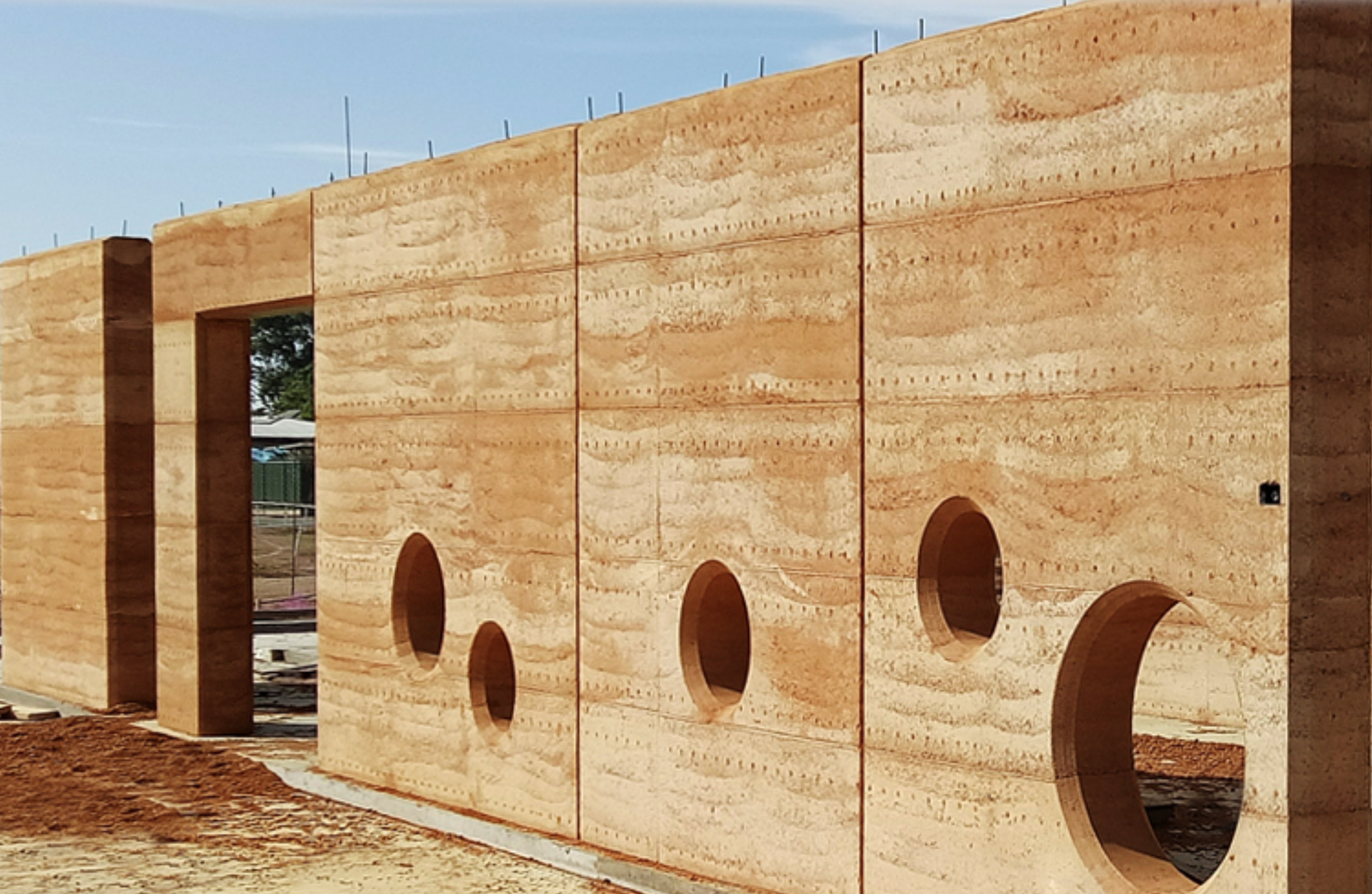
Processed Natural Elements
Brick
Brick, a classic building material, finds a place in desert construction for its durability and thermal properties. While not as thermally massive as some other options, brick still offers a degree of heat regulation, especially when used in thicker walls. Its strength and resistance to weathering make it a reliable choice for structural elements and exterior cladding in harsh desert conditions. Brick can be manufactured in a variety of colors and textures, contributing to the aesthetic appeal of desert homes. While the manufacturing process can be energy-intensive, brick's longevity and low maintenance requirements can contribute to the long-term sustainability of desert buildings. Properly detailed and integrated with other design strategies, brick can be a valuable material in creating comfortable and resilient desert architecture.
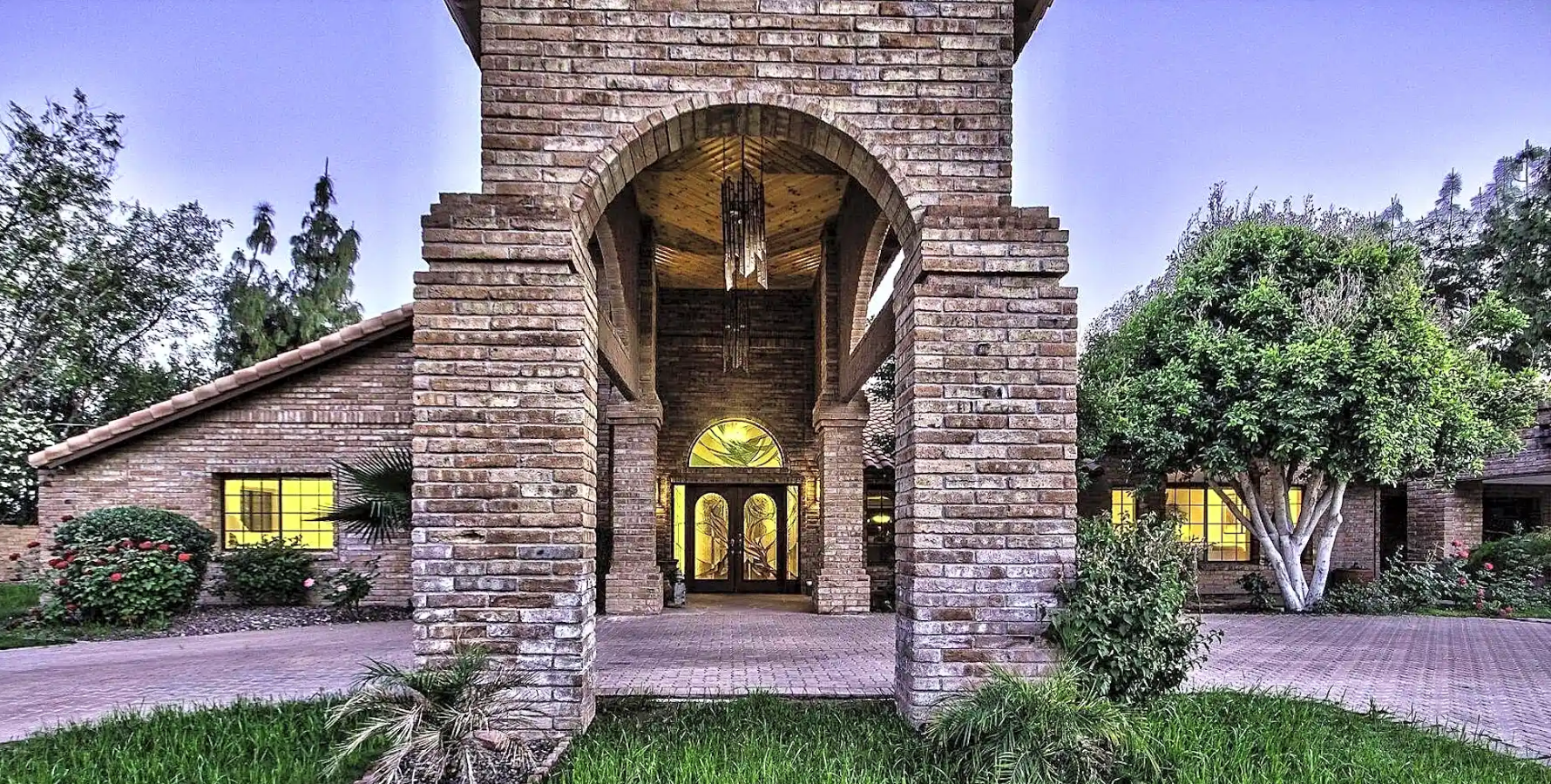
Processed Natural Elements
Metal
Metal, while seemingly counterintuitive in the intense desert heat, offers unique advantages as a building material. Its strength and durability allow for lightweight, long-spanning structures, ideal for creating shade and open-air spaces. Metal roofing, often with reflective coatings, can effectively deflect solar radiation, reducing heat gain. Steel framing offers resistance to pests and fire, common concerns in arid environments. While metal can conduct heat readily, proper insulation and ventilation strategies can mitigate this, making it a viable choice for certain applications. Beyond structural components and cladding, metal finds use in a variety of desert building elements, including shade structures like pergolas and awnings, intricate trellises for climbing plants, and even as a key component of gabion systems, where metal cages contain rock or other materials for thermal mass and erosion control. From these diverse applications, coupled with its versatility and recyclability, metal proves a valuable resource in contemporary desert architecture.
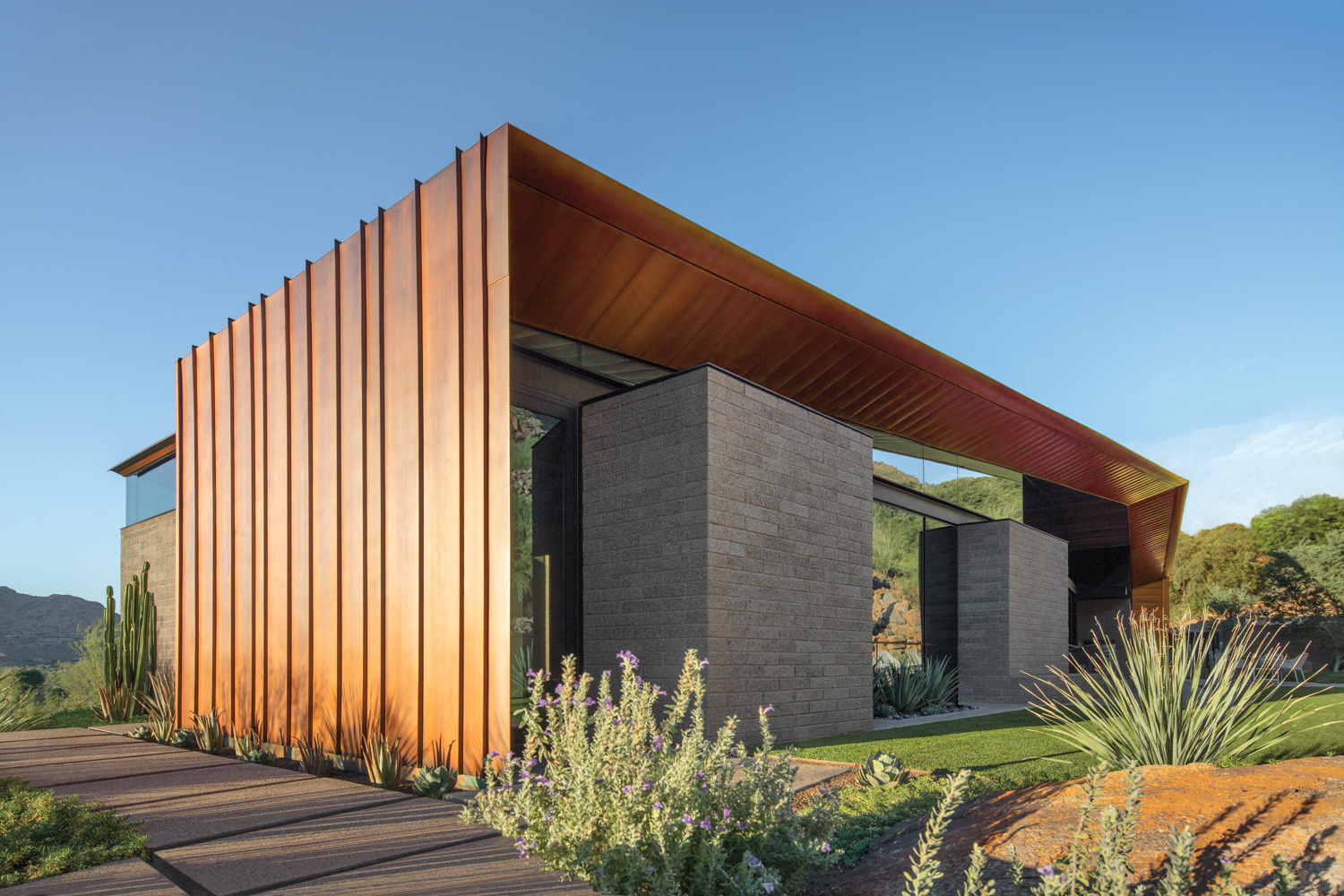
Processed Natural Elements
Wood
Wood, while perhaps unexpected in the desert, can be a valuable building material when used strategically. Its versatility allows for a variety of applications, from framing and roofing to shading structures and decorative elements. While wood isn't inherently thermally massive, it can be combined with other materials, like rammed earth or adobe, to create thermally comfortable and energy-efficient homes. Light-frame construction with wood is relatively quick and cost-effective, offering design flexibility. However, the desert environment presents several challenges for wood. The intense sun and heat can cause warping, cracking, and fading. Despite the generally dry climate, occasional rainfall or even high humidity can lead to rot, especially if detailing is poor. Termites, a common pest in many desert regions, pose a significant threat to wood structures. Protecting wood from these threats is crucial. Proper detailing, including ample roof overhangs, appropriate finishes, and careful consideration of orientation, can significantly extend the lifespan of wood in desert environments. Sustainable forestry practices and the use of reclaimed wood further enhance its appeal as an environmentally conscious choice, but careful consideration of its vulnerabilities is essential for successful implementation.
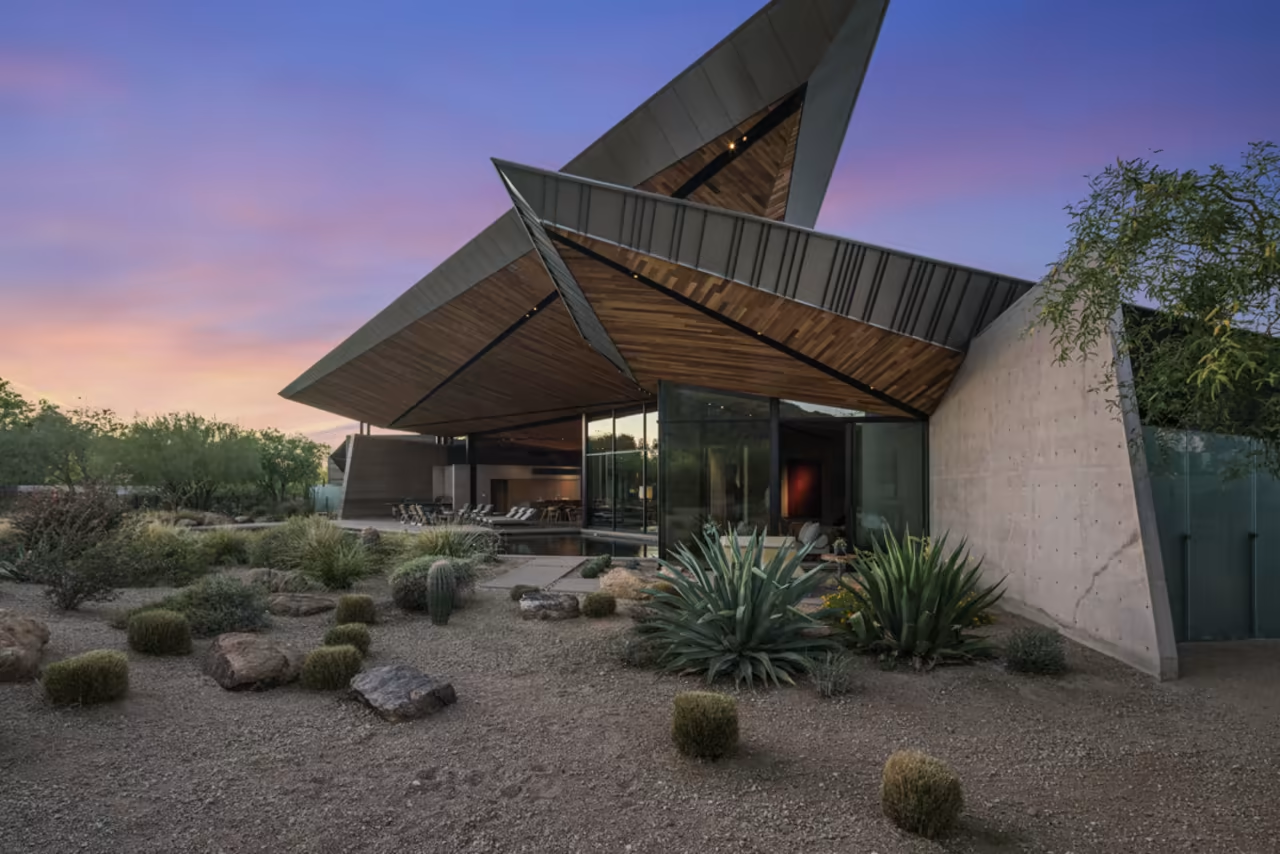
Synthetic Composite Material
Concrete
Concrete, a versatile and durable material, plays a significant role in desert construction. Its high thermal mass helps regulate interior temperatures, absorbing heat during the day and releasing it slowly at night, minimizing temperature swings. Concrete's strength and resilience make it ideal for foundations, walls, and roofs, providing structural stability in challenging desert conditions. From poured concrete walls and floors to precast panels, concrete masonry units (CMUs), and shotcrete, the material offers design flexibility and can be finished in a variety of ways to complement the desert landscape. Shotcrete, sprayed concrete, is particularly useful for creating curved surfaces, complex forms, and thin-shell structures, often employed in earth-sheltered or sculpted designs. While its production can have a significant environmental footprint, concrete's longevity and thermal performance contribute to the long-term sustainability of desert buildings. Concrete is the second-most-used substance in the world after water, and is the most widely used building material.
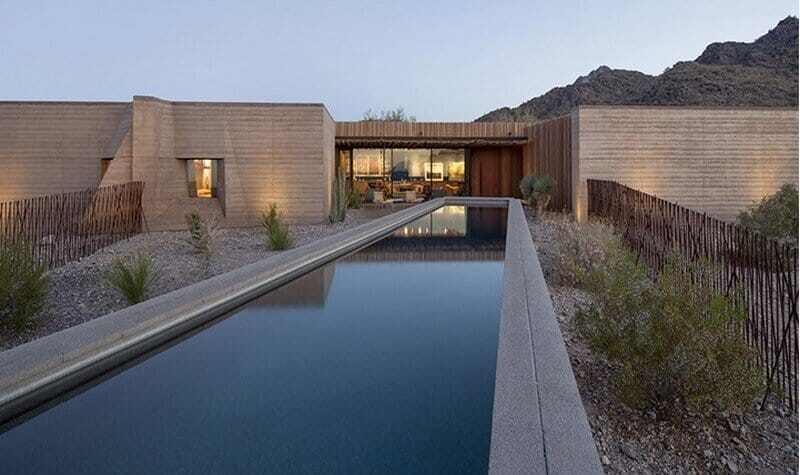
Insulating Concrete Forms
ICFs
ICFs consist of interlocking foam blocks that create a formwork for poured concrete. These forms, available in various sizes and core thicknesses (typically 4" to 12"), remain in place after the concrete cures, providing continuous insulation and a strong, energy-efficient wall system. ICFs offer design flexibility and are known for their resistance to wind, fire, and noise.
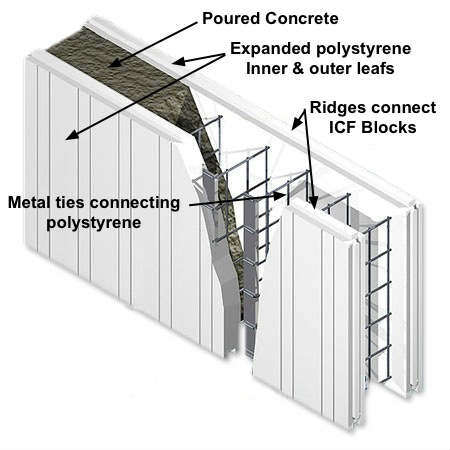
Structural Concrete Insulated Panels
SCIPs
SCIPs, also known as sandwich panels, utilize a rigid foam core (typically EPS) sandwiched between two layers of steel mesh. Diagonal truss wires through the foam and are welded to the mesh, creating a structural panel. Concrete or a cementitious material is then applied to both sides. SCIPs offer a rapid construction method, reduced concrete and rebar usage, and can be used for walls, floors, roofs, and other structural elements.
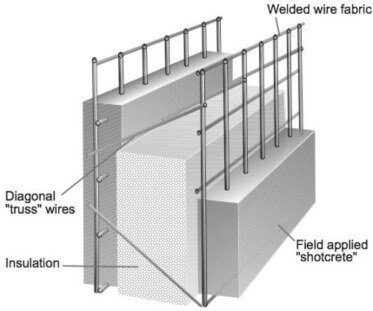
Structural Insulated Panels
SIPs
SIPs offer high performance for homebuilding projects. These panels comprise an insulating foam core between two structural sheathing materials, often OSB (Oriented Strand Board). Factory-made and customizable for almost any design, SIPs create a building system that is very strong, energy efficient, and economical.
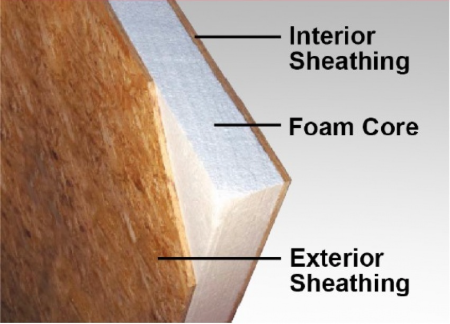

Architectural Services
Learn about our 5 stage process to help you design and build your dream home.
Site Selection Services
Learn about our process to help you select the best property for your future home.
Architectural Style Guide
See our homes in all the desert architectural styles you can choose from for your home.
Arizona Climate Guide
Learn about the 4 different desert climates of Arizona to help you select which is right for you.
Desert Building Strategies
Learn about strategies to beat the heat and harsh conditions of the desert to make a house an oasis.
Desert Building Technologies
Learn about desert building technologies that aren't just cool, but make desert living cooler.
Desert Building Materials
Learn about all the available building materials and which ones do well in the desert and are right for you.
Desert Architect Articles
Read articles by Desert Architect on architecture, architectural trends, and innovations.

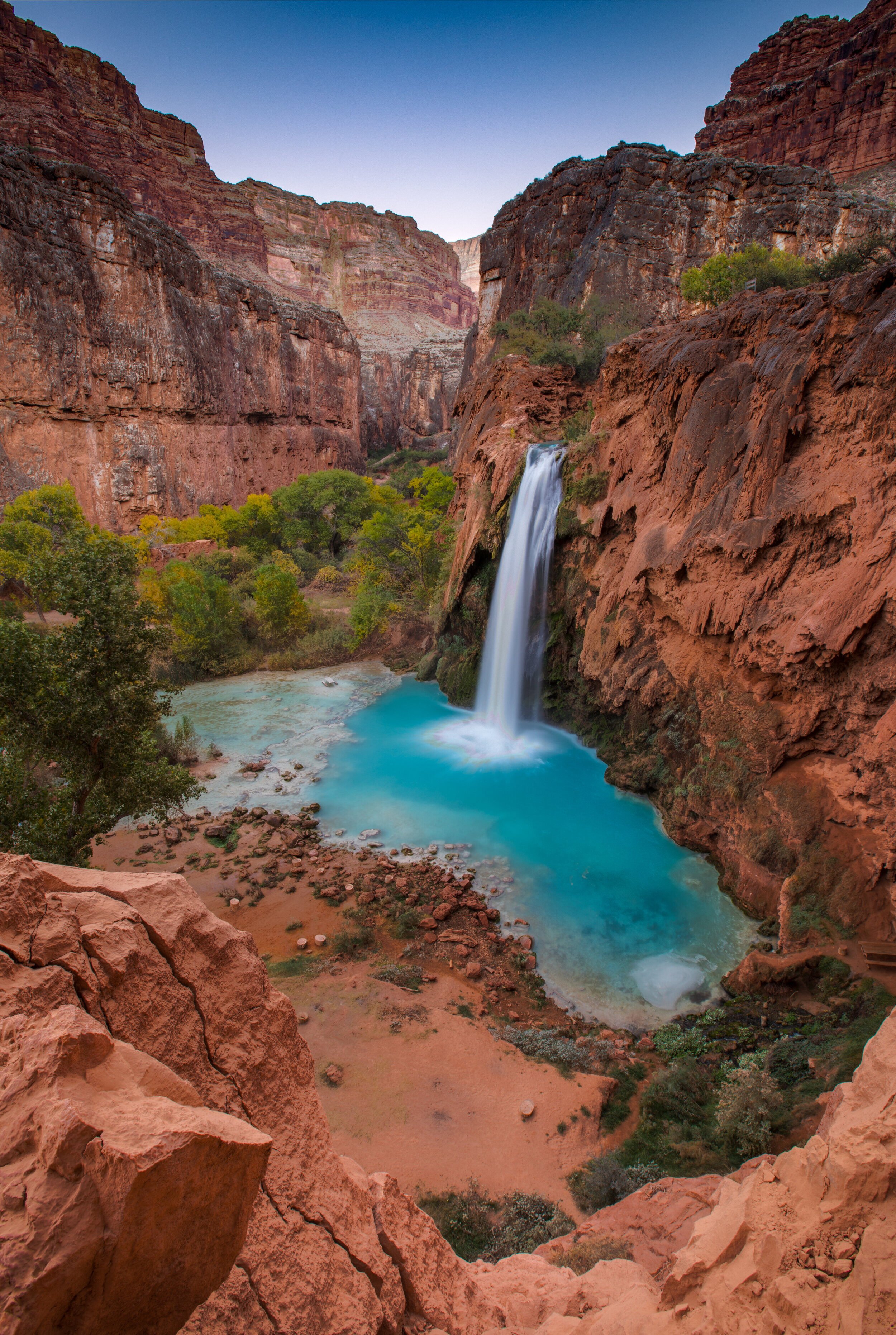
Arizona Relocation Guide
Learn about Arizona and all the great places to relocate to in state 48.
Arizona Climate Guide
Learn about the 4 different desert climates of Arizona to help you select which is right for you.
Sustainable Desert Living
Learn how to live sustainably in desert ecosystems to increase the value of your home and life in Arizona.
Adventures in Arizona
Learn about all the incredible adventures Arizona has to offer to live life to the fullest in the Grand Canyon state.
Lets begin
Ready to start your Journey
The Desert Architect Team is here to help you select the materials for your home.